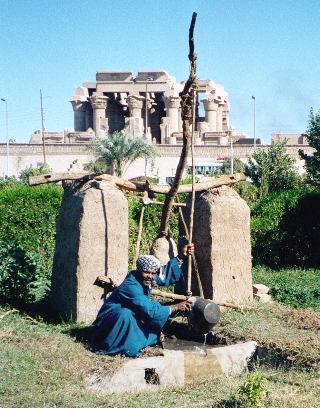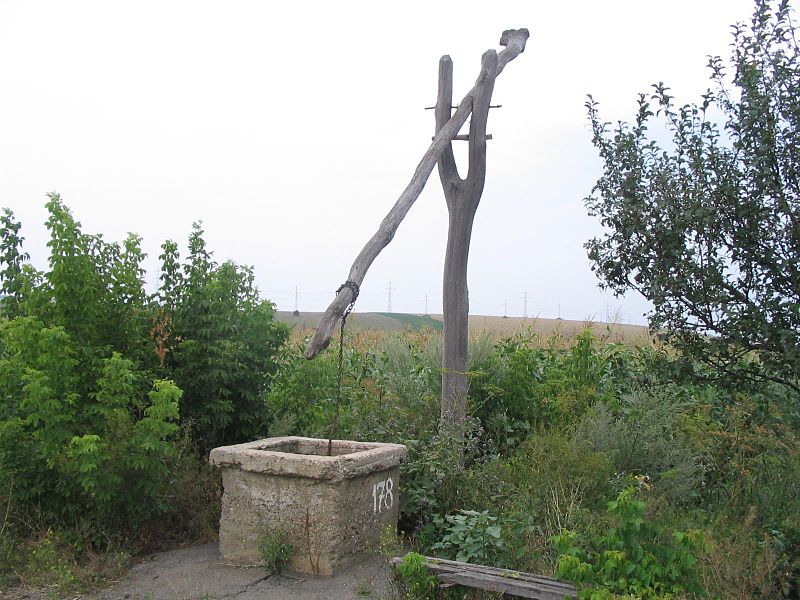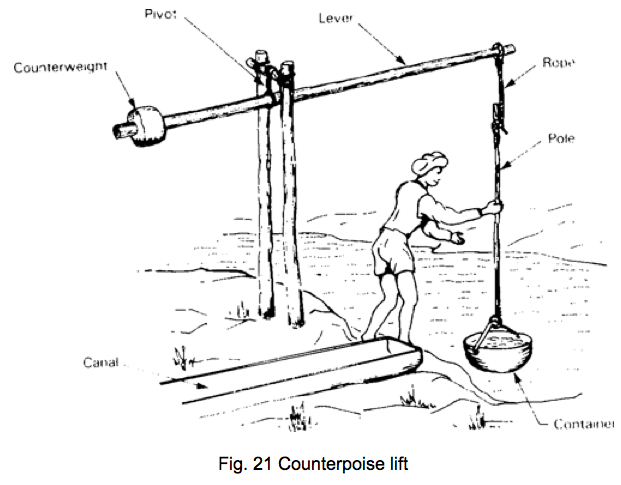Difference between revisions of "Counterpoise lift"
From Akvopedia
| Line 1: | Line 1: | ||
[[Image:counterpoiseLift_shadoof.jpg|thumb|right|300px| Photo: A shadoof in Egypt. [http://en.wikipedia.org/wiki/File:Egypt.KomOmbo.Shaduf.01.jpg Egypt.KomOmbo.Shaduf]]] | [[Image:counterpoiseLift_shadoof.jpg|thumb|right|300px| Photo: A shadoof in Egypt. [http://en.wikipedia.org/wiki/File:Egypt.KomOmbo.Shaduf.01.jpg Egypt.KomOmbo.Shaduf]]] | ||
[[Image:counterpoiseLift.jpg|thumb|right|300px|A counterpoise lift. Drawing: FAO.]] | [[Image:counterpoiseLift.jpg|thumb|right|300px|A counterpoise lift. Drawing: FAO.]] | ||
| + | [[Image:counterpoiseLift_shadoof2.jpg|thumb|right|300px| Photo: A shadoof in Eastern Romania. [http://en.wikipedia.org/wiki/File:Shaduf-romania.JPG Shaduf-romania.]]] | ||
Also known as ''shadoof'', ''shaduf'', ''dhenkli'' or ''picottach'', the counterpoise lift consists of a long wooden pole and is generally used for lifting water from unlined wells, streams or ponds and for irrigating small fields. A weight, often a large stone or a ball of dried mud or a basket filled with small stones is fixed at the shorter end of the pole to counterpoise the weight of a filled bucket which is attached to the longer arm of the pole with a rope. The bucket is emptied by a sideways tipping motion. This device is used to lift water up to a height of 1 - 3 metres. About 2000 1itres of water can be lifted from the depth of 2 to 3 metres in one hour. | Also known as ''shadoof'', ''shaduf'', ''dhenkli'' or ''picottach'', the counterpoise lift consists of a long wooden pole and is generally used for lifting water from unlined wells, streams or ponds and for irrigating small fields. A weight, often a large stone or a ball of dried mud or a basket filled with small stones is fixed at the shorter end of the pole to counterpoise the weight of a filled bucket which is attached to the longer arm of the pole with a rope. The bucket is emptied by a sideways tipping motion. This device is used to lift water up to a height of 1 - 3 metres. About 2000 1itres of water can be lifted from the depth of 2 to 3 metres in one hour. | ||
Revision as of 05:39, 2 May 2012

Photo: A shadoof in Egypt. Egypt.KomOmbo.Shaduf

Photo: A shadoof in Eastern Romania. Shaduf-romania.
Also known as shadoof, shaduf, dhenkli or picottach, the counterpoise lift consists of a long wooden pole and is generally used for lifting water from unlined wells, streams or ponds and for irrigating small fields. A weight, often a large stone or a ball of dried mud or a basket filled with small stones is fixed at the shorter end of the pole to counterpoise the weight of a filled bucket which is attached to the longer arm of the pole with a rope. The bucket is emptied by a sideways tipping motion. This device is used to lift water up to a height of 1 - 3 metres. About 2000 1itres of water can be lifted from the depth of 2 to 3 metres in one hour.
Contents
Suitable conditions
Construction, operations and maintenance
Costs
Field experiences
Reference manuals, videos, and links
Acknowledgements
- Water lifting devices. Agricoop.nic.in
- Water lifting devices. Inseda.org

